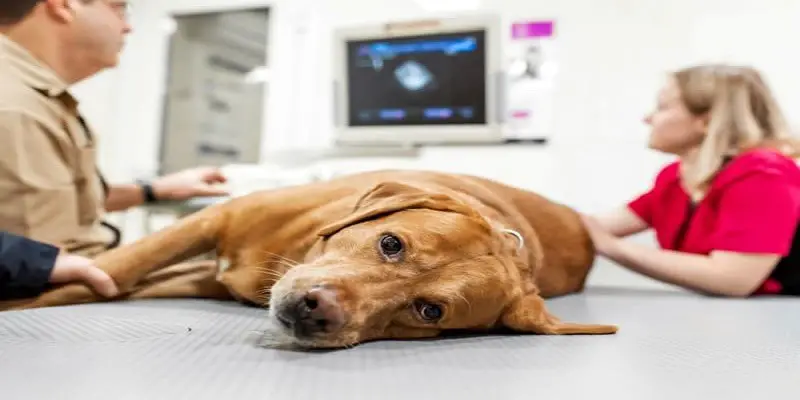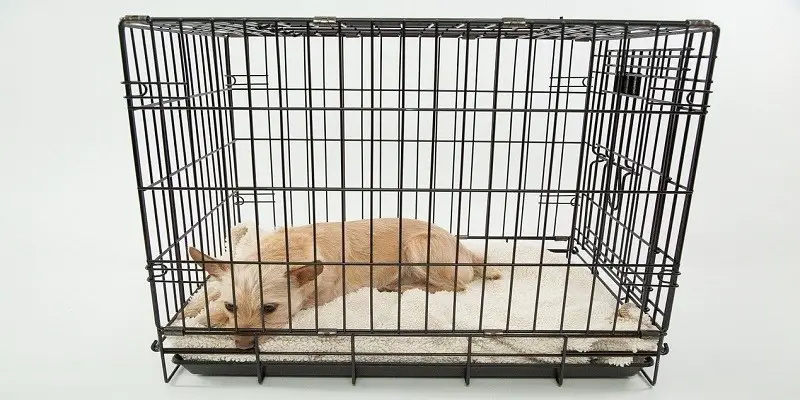Last Updated on September 14, 2023 by Pauline G. Carter
A dog can safely have a maximum of three C-sections. C-sections should be performed only when necessary to minimize risks.
Dog c-sections are a medical procedure used to deliver puppies through an incision in the mother’s abdomen and uterus. While C-sections can be life-saving for certain situations, they should not be taken lightly. It is important to understand that each subsequent C-section poses increased risks for the mother dog.
Multiple C-sections can lead to complications, such as uterine rupture and infection. Therefore, it is generally recommended not to exceed three C-sections for the safety of the mother dog. Veterinarians carefully evaluate the situation to determine if a C-section is necessary based on factors such as the size of the litter, the mother’s health, and the potential risks involved. It is crucial to consult with a qualified veterinarian to assess the health and well-being of the mother dog and make informed decisions regarding C-sections.
Breeds Prone To C-Sections In Dogs
Breeds of dogs prone to C-sections may require this procedure multiple times, but the safety limit varies depending on several factors like the dog’s health and recovery. Consulting with a veterinarian is essential to determine the number of C-sections a dog can safely have.
If you’re wondering which dog breeds are more likely to undergo a C-section, this section will provide you with valuable insights. While it’s important to note that any dog can potentially require a C-section, certain breeds are more prone to complications during labor and delivery.
Read on to learn more about which breeds may require assistance during childbirth:
Chihuahua
Chihuahuas, known for their tiny size, are especially prone to difficulties during birth due to their narrow pelvis. Here are a few key factors to consider:
- Chihuahuas often have a high rate of dystocia, a term referring to challenging or obstructed labor.
- Their puppies have relatively large heads, making it difficult for them to pass through the birth canal.
- The breed’s susceptibility to hypoglycemia can further complicate the birthing process.
French Bulldog
French Bulldogs, adored for their affectionate nature and distinctive appearance, commonly require C-sections. Here’s why:
- Their broad shoulders often cause difficulty during delivery.
- The breed’s brachycephalic (short-headed) structure can make labor more challenging.
- Their puppies’ large heads are not easily accommodated by the mother’s birth canal.
English Bulldog
English Bulldogs, known for their lovable and laid-back demeanor, frequently face birthing complications. Key considerations include:
- The breed’s large heads and narrow hips often result in a C-section being necessary.
- Their short face and wrinkled skin can contribute to respiratory issues, further complicating labor.
- Due to their body structure, English Bulldogs commonly experience dystocia.
Boston Terrier
Boston Terriers, beloved for their friendly and lively character, commonly require assistance during childbirth. Here’s what you should know:
- Their small pelvis and head size can cause birth complications.
- Brachycephaly, a hallmark of the breed, can lead to respiratory difficulties during labor.
- Boston Terriers are susceptible to dystocia due to their body structure.
Pekingese
The Pekingese breed, known for its regal appearance and independent nature, is no stranger to difficulties during labor. Consider the following:
- Pekingese have a small pelvis and relatively large heads, often requiring surgical intervention.
- Their short snouts and associated brachycephalic traits can lead to respiratory issues during delivery.
- Due to their body shape, Pekingese are prone to dystocia.
Dachshund
Dachshunds, with their long bodies and energetic temperament, commonly face challenges during birthing. Consider the following factors:
- Their unique body shape makes it difficult for puppies to pass through the birth canal.
- Dachshunds often require C-sections due to their breed characteristics.
- The risk of pups getting stuck during labor is higher in dachshunds.
By being aware of these breeds’ predisposition to birthing complications, you can better prepare yourself and your furry friend for a safe and stress-free delivery. Remember, early veterinary consultation is vital to ensure the well-being of both the mother and her puppies.
Factors That Increase The Likelihood Of A C-Section
Factors such as obesity, breed, and age can increase the likelihood of a dog needing a C-section. It’s important to consult with a veterinarian to determine the safe number of C-sections a dog can have.
Brachycephalic breed characteristics:
- Brachycephalic dog breeds, such as Bulldogs, Pugs, and Boxers, have unique head shapes with shortened snouts. These breeds often have narrow birth canals, making it difficult for puppies to pass through during delivery. This can increase the likelihood of a C-section to ensure the safety of both the mother and the puppies.
Large litter size:
- Dogs with larger litter sizes are more prone to complications during delivery. When a dog is unable to give birth naturally to all the puppies due to the number or positioning in the womb, a C-section may be necessary to ensure the survival of the puppies.
Maternal pelvic size:
- The size and shape of a dog’s pelvic area can determine the ease or difficulty of natural delivery. In cases where the mother’s pelvic area is too small or narrow, the puppies may not be able to pass through, leading to the need for a C-section.
Uterine abnormalities:
- Uterine abnormalities, such as having a small or misshapen uterus, can interfere with the dog’s ability to give birth naturally. These abnormalities may restrict the movement of the puppies or make it difficult for the uterus to contract effectively during delivery. In such cases, a C-section is often necessary to safely deliver the puppies.
Previous C-sections:
- Dogs that have previously undergone a C-section are more likely to require another one in subsequent pregnancies. This is because the scar tissue from the previous surgery can weaken the uterine wall, potentially leading to complications during labor. Veterinary professionals closely monitor dogs with a history of C-sections to determine if a repeat C-section is necessary for the safety of the mother and the puppies.
Several factors can increase the likelihood of a dog requiring a C-section for a safe delivery. Brachycephalic breeds with their unique head shapes, large litter sizes, maternal pelvic size, uterine abnormalities, and previous C-sections are all important considerations for veterinary professionals when determining the best course of action to ensure a successful and safe delivery for both the mother and her puppies.
Risks And Considerations For Multiple C-Sections
When it comes to dogs, there are risks and considerations to keep in mind when considering multiple C-sections. It’s important to understand the maximum number of C-sections a dog can have safely to ensure the health and well-being of both the mother and puppies.
Giving birth through Caesarean section, commonly known as a C-section, can be a life-saving procedure for both dogs and their puppies. However, having multiple C-sections poses certain risks and considerations that dog owners should be aware of. In this section, we will discuss the increased risk of complications, scar tissue formation, the possibility of a damaged uterus, and decreased fertility.
Additionally, we will explore alternative birthing methods that can be considered to minimize these risks.
Increased Risk Of Complications:
- Each C-section increases the risk of complications for both the mother dog and her puppies.
- The surgical procedure itself, although routine, carries inherent risks such as infection, excessive bleeding, or negative reactions to anesthesia.
- Dogs with multiple pregnancies may develop complications such as poor uterine contractions, leading to delayed labor, or dystocia.
- The risk of complications is higher with each subsequent C-section, making it crucial to carefully evaluate the necessity of the procedure.
Scar Tissue Formation:
- With each C-section, the formation of scar tissue in the uterus becomes more pronounced.
- Scar tissue can affect the strength and elasticity of the uterine walls, potentially increasing the risk of uterine rupture during subsequent pregnancies.
- Uterine rupture can be life-threatening for the mother dog and her puppies, requiring emergency intervention.
Damaged Uterus:
- Repeated C-sections can cause damage to the uterus, leading to thinning of the uterine walls.
- A thin or weakened uterus may make it difficult for successful implantation of future pregnancies.
- In severe cases, a damaged uterus may compromise the mother dog’s ability to carry future litters to term, necessitating alternative methods of reproduction.
Decreased Fertility:
- Multiple C-sections can reduce the fertility of a female dog.
- As scar tissue accumulates and the uterus undergoes repetitive trauma, fertility may decline.
- Decreased fertility can make achieving successful pregnancies more challenging, further limiting the options for future litters.
Alternative Birthing Methods:
- In cases where a dog has undergone multiple C-sections, alternative birthing methods such as planned elective C-sections or hormone-induced labor may be considered.
- Planned elective C-sections involve scheduling the procedure well in advance, allowing for careful monitoring and minimizing the risks associated with labor.
- Hormone-induced labor can stimulate uterine contractions, initiating normal labor and delivery without the need for surgery. However, this approach requires close veterinary supervision.
While C-sections can be a life-saving intervention for dogs and their puppies, repeated procedures carry certain risks. Increased risk of complications, scar tissue formation, a damaged uterus, and decreased fertility are all considerations that need to be evaluated. Alternative birthing methods may provide safer options for future litters, minimizing the potential risks associated with multiple C-sections.

Credit: www.lovetoknowpets.com
Frequently Asked Questions On How Many C-Sections Can A Dog Have Safely?
How Many C-Sections Can A Dog Safely Have?
A dog can safely have up to three C-sections in her lifetime, but each case should be evaluated by a veterinarian.
What Are The Risks Of Multiple C-Sections For Dogs?
Multiple C-sections for dogs increase the risk of complications such as uterine rupture, infections, and anesthesia-related issues.
How Long Should You Wait Between Dog C-Sections?
It is recommended to wait at least 12 months between dog C-sections to allow the mother’s body to fully recover.
Can A Dog Have A Natural Birth After A C-Section?
In some cases, a dog with a previous C-section may be able to have a successful natural birth, but it depends on the circumstances and the vet’s recommendation.
What Signs Indicate A Dog Needs A C-Section?
Signs that indicate a dog may need a C-section include prolonged labor, green discharge, weak contractions, and signs of distress in the mother or puppies.
Conclusion
The number of C-sections a dog can safely have varies depending on various factors such as the dog’s breed, health condition, and age. While C-sections can be a life-saving procedure for both the mother and puppies, it is crucial to prioritize the dog’s well-being and consult with a trusted veterinarian.
It is generally recommended to limit the number of C-sections a dog has to prevent potential complications and minimize the risk of future pregnancies. Ensuring a dog receives proper medical care, including regular check-ups and monitoring, can significantly contribute to the overall safety and health of both the mother and her puppies.
Remember, the well-being of the dog should always be the top priority, and responsible breeding practices are essential for maintaining the health and welfare of these beloved pets.
About Author (Pauline G. Carter)

Pauline G. Carter is a well-known pet blogger who has written about the world of pets for several years. She is passionate about pets, from cats and dogs to birds, reptiles, and poultry. Her blog, which is updated regularly, is filled with articles and guides on pet care, nutrition, and training. She also shares her experiences and observations on pet ownership, making her blog relatable and informative for pet lovers. She is a true animal advocate and is dedicated to promoting responsible pet ownership. Let’s Go …





